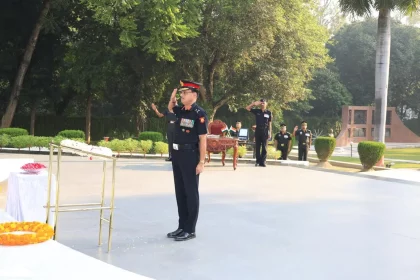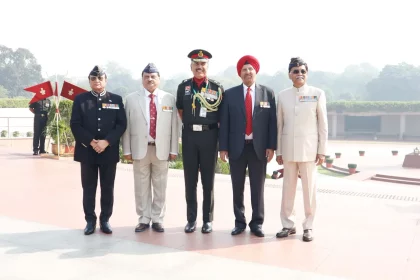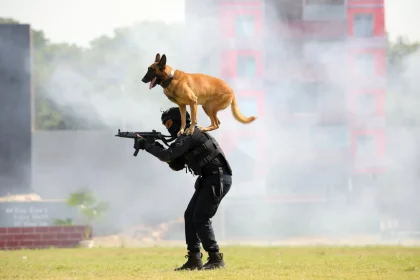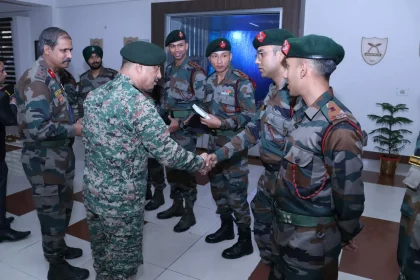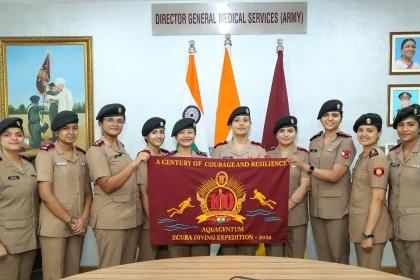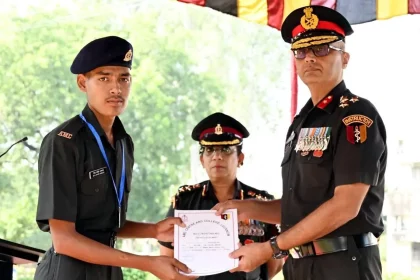83rd EME Corps Day: Maj Gen Suresh S Leads Tributes at Smritika War Memorial, Lucknow
Celebrating 83 years of innovation, precision, and service — the Corps of EME continues to power the Indian Army’s technological…
EME Corps Day: Lt Gen Rajiv Kumar Sahni Leads Wreath-Laying Ceremony at National War Memorial
Honouring the indomitable spirit and technical excellence of the Corps of Electronics and Mechanical Engineers on their Corps Day at…
NSG Marks 41st Raising Day with Operational Demonstrations and Key Announcements
The force remains a cornerstone of India's internal defence architecture, poised to safeguard the republic's sovereignty for decades to come.
Assam Rifles Conducts Orientation Programme for Newly Posted Officers at HQ DGAR Shillong
DG Assam Rifles Lt Gen Vikas Lakhera Motivates Officers to Uphold the Force’s Proud Traditions and Values.
10 MNS Officers Embark on Scuba Diving Expedition to Celebrate Centenary of Military Nursing Service
Ten Officers Led by Lt Col Rashmi Sharma to Celebrate Adventure, Resilience, and India’s Maritime Spirit.
Attestation Parade of 6th Batch of Agniveer Tradesmen Held at AMC Centre & College, Lucknow
The 6th Batch of 116 Agniveer Tradesmen passed out at AMC Centre & College, Lucknow, with Brig Vikram Singh Grewal…

